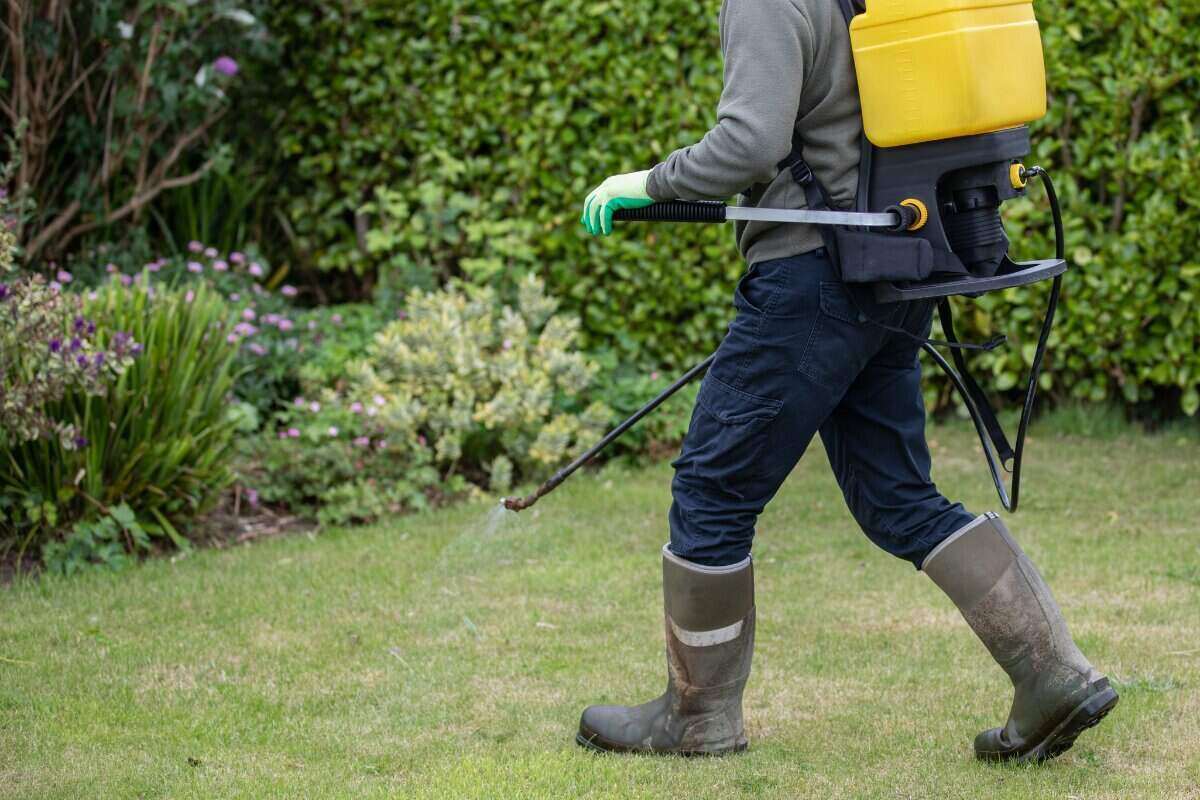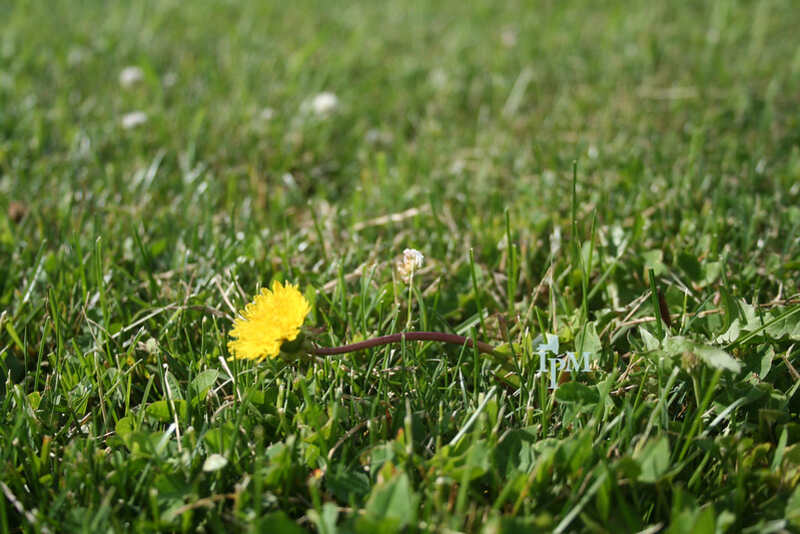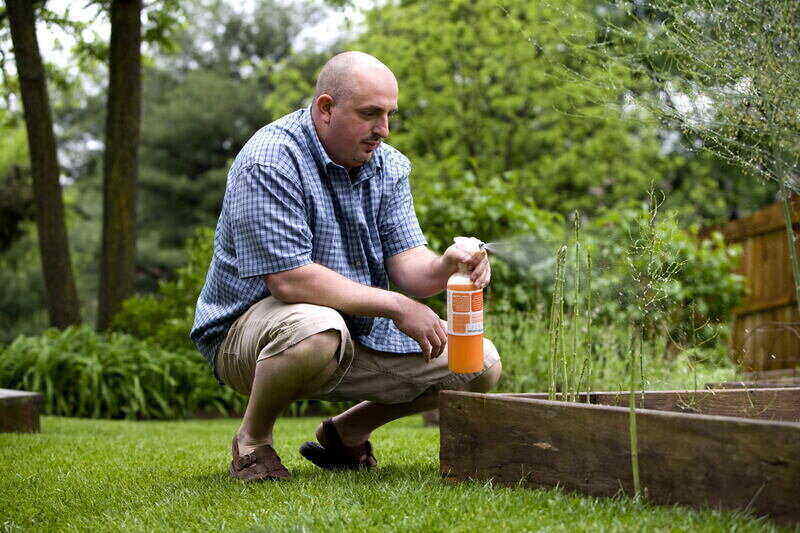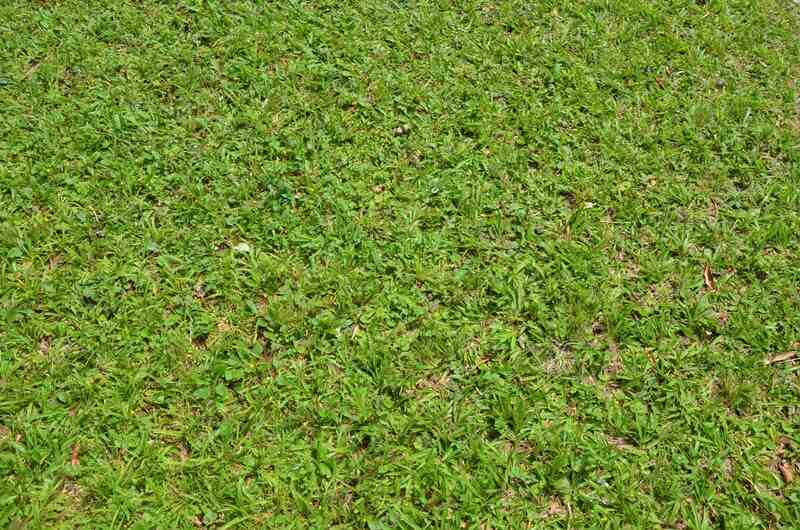
Even for the most meticulous gardener, weeds happen. However, with the help of this article, you can learn about weed spraying your lawn so you don’t have to make this last-resort practice an annual chore. Here’s how to get rid of weeds.
Three Classes of Weeds: Broadleaf, Grassy, Sedge
The first step to controlling weeds is to know your target. Weeds fall into three classes: broadleaf, grassy, and sedge.
Broadleaf weeds produce two seed leaves as the plant emerges, generally displaying broader leaves and branched stems. Broadleaf weeds include:
- White clover
- Dandelion
- Thistle
- Pokeweed
- Poison ivy
Grassy weeds produce one seed leaf, like regular turfgrass. Examples of grassy weeds include:
- Goosegrass
- Crabgrass
- Rushes
Sedges also make just one seed leaf, but in cross-section, the leaves show a triangular shape, as with:
- Yellow nutsedge
Annual and Perennial Weeds

Weeds have one of two types of growing habits — annual and perennial.
- Annual weeds live for just one season, which makes them easier to control.
- Perennial weeds, such as dandelions or crabgrass, recur yearly from the same root system.
According to horticulture agent Mary Helen Ferguson with the Louisiana State University Extension in Livingston Parish, “Once an annual weed has flowered and gone to seed, it’s already done most of its damage and will die soon anyway. Once a seed has developed, that seed will be in the soil for the following years.”
Identify Your Weeds
Before you head to the store to pick up weed killer, identify the weeds first. If you are looking for more help with weed identification, there are helpful sources available:
- The Weed Science Society of America (WSSA) is a non-profit organization that promotes the understanding of weeds and their effects on the environment. They also offer a gallery of weed photos to help homeowners identify their culprit.
- Your local County Extension Service can also help you to ID your weeds.
Herbicide Formulations: Liquid, Granular, Selective, Nonselective
Now that you know your weed type, you face more choices. Do you want to use a liquid or granular herbicide? Selective or nonselective? “The type of product that’s best will depend on the type of weed you’re trying to kill and the type of turfgrass that you have,” says Ferguson.
Decide which will work for you based on the bullet points below:
- Liquid herbicides are usually mixed with water and sprayed from a handheld or backpack pump sprayer.
- Granular herbicides are mixed with an inert carrier like clay, lime, or a fertilized carrier and spread from a fertilizer spreader.
- Selective herbicides kill specific plants. It is selective if the label says “broadleaf herbicide” or something similar. If you follow the label directions, you can spray it, and it will kill the weeds without killing your grass.
- Nonselective herbicides kill whatever they touch. For these, you need a spray bottle and careful aim.
Two Types of Spraying: Broadcast Or Spot
When it comes to yard spraying, it’s crucial to identify whether you should use the broadcast or spot spray technique based on the area you intend to treat and what’s in it (plants and landscaping). Don’t mix them up, or you could kill your lawn.
- Broadcast spraying is applying the herbicide across the entire lawn. You broadcast spray selective weed killer since the grass can tolerate it.
- Spot treatments use an applicator, like a pressurized sprayer, to apply the herbicide directly to the weed so no other plants are affected. Easier to use around patios and on sidewalks.
Now that you know the differences between the major categories of herbicides, see our list of the best weed killers on the market to find the best weed spray for lawns.
Pre-Emergent, Post-Emergent, and Weed and Feed

Pre-Emergent Herbicides
A pre-emergent herbicide can be especially helpful as a crabgrass killer and for places in your lawn where weeds pop up yearly.
Pre-emergent herbicides need precise timing. The critical number is 52: Crabgrass and other seeds begin to germinate when the soil temperature (not the air temperature) hits 52 degrees Fahrenheit. You must apply the pre-emergent herbicide before that moment for them to be effective.
“Pre-emergence herbicides are only appropriate for weeds that come back from seed, and they generally work better on small-seeded weeds,” Ferguson says. “They’re most often used for annual grasses like crabgrass.”
Post-Emergent Herbicides
A post-emergent herbicide targets existing weeds and is especially helpful in places such as driveways or sidewalks. According to Ferguson, “Post-emergence herbicides are best applied early enough in the life of a weed to kill the weed while it’s still small before it flowers and produces seed.”
Weed and Feed
A weed and feed is a herbicide that includes a fertilizer. This product catches a lot of grief from some gardeners and environmentalists since its application is hard to get correct and easy to abuse. The best time to apply fertilizers is often the wrong time to use a weed killer and vice versa. People often get it wrong.
Ferguson notes, “For example, here in Louisiana, the appropriate time for making an initial application of a pre-emergence herbicide for crabgrass is earlier than the time when nitrogen-containing fertilizer should be applied.”
Keeping your herbicide and fertilizer treatments separate will help your grass in the long run.
When to Apply Herbicides
Pre-Emergent Herbicides
Use pre-emergent herbicides before summer and winter annual weeds sprout. The key is knowing when to apply pre-emergents:
- Summer annual weeds: These weeds sprout in the spring, thrive in the summer, and set seed and die in fall and winter. Apply pre-emergent herbicide just before the soil temps reach 52 F to control pesky summer annuals like crabgrass, foxtail, and goosegrass.
- Winter annual weeds: Weeds like poa annua and filaree germinate in fall or winter, grow in the spring, and perish when the summer temps start to rise. When the soil temps reach 70 F, apply a pre-emergent to stop these weeds from sprouting above the soil surface.
Post-Emergent Herbicides
If you procrastinated and are now too late to apply a pre-emergent, have no fear! Selective and nonselective herbicides are usable whenever you find the plants actively growing. However, these post-emergents work best early in the season when the weeds are still small.
- Apply in spring (late April-early June) or early fall (September 15 to October 15) for the most efficient management. (Timing depends on where you live.)
- Lightly coat the leaves with the weed spray. Do not saturate an area with a post-emergent herbicide. It will be washed past the plants and into the soil, where it may damage other plants or get into water sources.
- Reapply as needed. Stubborn weeds may need repeated treatments at 10- to 20-day intervals to eradicate them. Again, carefully follow the label’s directions about the time between sprays.
How to Spray Weeds in Your Lawn
You’ve hit the trifecta: You’ve determined what kind of weeds you have, picked out your herbicide, and chosen how you want to treat your lawn weeds. Here’s what to do next.
Before Application
- Read the labels of herbicides entirely and follow the guidelines laid out by the manufacturer. The label’s information is a legally binding agreement between you and the manufacturer that you will use the product responsibly.
- Check the weather. Rain or wind can send herbicide drifting into nearby flower beds or other areas where it will harm desirable plants.
- Wear personal protective equipment (PPE), which includes but is not limited to:
- Long-sleeved shirts and long pants that reach your shoes should be chemical-resistant. You can use a disposable jumpsuit; chemical aprons will also help protect you.
- Gloves
- Goggles
- Hat
- Face shield or dust mask
- Calibrate the sprayer for application at the recommended rate, attach the recommended nozzle, and make sure it’s clean.
- Calculate the amount of herbicide to add to the tank and read and follow the instructions printed on the manufacturer’s label.
- Mix your solution following the directions on the label. Be careful to fill the sprayer with at least half the amount of water or fertilizer you will ultimately require, starting with moderate agitation, and keep going as needed.
Differences Between Soluble Liquids and Powders and Granular Herbicides
- Soluble liquids and powders, such as the controversial weed killer Roundup, dissolve in water to form a solution and, once mixed, don’t require additional agitation.
- Granular herbicides, once added to a carrier, can be applied directly to the soil without further dilution. However, they usually need more rainfall activation than comparable sprayable formulations.
During Application
Slow and steady wins the race. Consistent spraying will get better results.
- When spot spraying, target only the weeds you want, using a foam applicator or precise spraying.
- When broadcast spraying, cross your lawn with each pass at a steady pace, and make sure you’re not leaving untreated strips.
Note: Maintain a spray height about 2 feet above the grass to encourage maximum coverage and reduce the potential for drift.
After Application
You’re almost there!
- Pre-emergent herbicide: It will require roughly 1 inch of water to work. Irrigate within three days of application if you have no rain. The product label will have specific instructions.
- Post-emergent herbicide: Wait at least three days before cutting your grass to allow the herbicide time to work fully.
- Clean your equipment: Thoroughly clean your sprayer. Reusable gloves should be cleaned before removal and stored in a plastic bag.
Raising a Weed-Free Lawn

According to the University of Delaware Cooperative Extension, the best way to deal with weeds is to avoid spraying them altogether. “Vigorous, healthy turf shades weed seeds so they don’t germinate.” A healthy lawn shouldn’t require weed-killing spray.
Weeds can indicate what your lawn and soil lack, and in a way, they can be your friends rather than your enemies.
The best plan is to maintain good lawn care habits to prevent weeds.
- Grow it out: If you mow your grass too short, it will become stressed and vulnerable to weeds. Follow the one-third rule: Never cut more than one-third of the grass blade height at a time.
- Leave it behind: Grass cuttings can serve as nourishing mulch for the grass. Leave your grass clippings on the lawn rather than bagging them so they can block out weeds.
- Ditch the thatch: Thatch is the layer of organic matter, both alive and dead, that builds up between your grass and the topsoil. Thatch over one-half inch thick on your grass may attract bugs and diseases. Drag the tines of a dethatching rake, also called a power rake, deep into the grass to reach the layer underneath.
- Break it up: If the soil in your lawn is compacted, it won’t be able to absorb what it needs. Aeration loosens compacted soil, allowing water, oxygen, and nutrients to reach your grass’s root system.
- Water it right: Deep, occasional watering promotes a robust and resilient root system. If your soil is mostly clay, apply about 1 inch of water once per week. If your ground is more sandy, reduce this amount to 0.5 inches of water twice per week. Watering the lawn before 10 a.m. is best. Don’t water your yard at night.
- Get it tested: A soil test can be the difference between success and failure if you want to achieve a weed-free lawn. For example: Dandelions grow well in low pH, acidic soils with high potassium levels and low calcium.
- Feed the beast: For it to develop and thrive, your grass needs nutrients. The best nutritional booster is fertilizer. Learn how to pick the ideal lawn fertilizer if you’re new to fertilizing your grass.
- Recycle your leaves: Your grass may become choked by a heavy coating of leaves, preventing your lawn from getting the sunlight it needs. Plus, it becomes a haven for disease and pests. Instead of bagging them, mulch your leaves to make your own organic mulch or add them to your compost pile.
- Sow some seed: A lush, thick lawn that keeps weeds at bay may be kept up by overseeding or planting new grass seed once a year. You’ll need to prep the ground, sow the seeds, and tend the growing plants. These guidelines will show you how to overseed your lawn.
- Keep out critters: Grass insects and diseases limit your lawn’s ability to fight back against weeds. Before they ravage your property, you can use an Integrated Pest Management approach to combat pests and pathogens, such as weeds, common fungal diseases, and wildlife.
FAQ
Should I Use an Herbicide to Get Rid of Weeds?
No, herbicides should not be a first resort to control weeds in your lawn. The University of Maryland Extension notes that homeowners have been using herbicides for weed killing since the 1950s, “but the potential risks to people, animals, and the environment should cause people to reconsider their use as part of routine lawn care.”
Many gardeners and lawn care professionals have switched from chemical herbicides and prefer to practice organic lawn care, which uses natural weed killers and other weed control methods.
The Extension also reiterates that good lawn care practices, in general, are the best way to prevent weed germination and that “herbicides should be used as a last resort and not a substitute for good lawn care.”
Will Vinegar Kill Weeds?
No, and yes. Culinary vinegar (5% acetic acid) is not very effective at killing weeds. Herbicidal vinegar (10-20% acetic acid) can be effective against weeds on its own or in homemade DIY solutions.
Keep in mind that although homemade vinegar weed killers (with herbicidal vinegar) seem simple and safe to apply, they can also cause problems.
Check out the potential pitfalls:
- DIY recipes may be less effective than other methods, such as manual removal, particularly on larger weeds.
- Most recipes add salt to the vinegar mixture, which can build up and ruin your soil.
- Vinegar contains acetic acid, and herbicidal vinegar has a high concentration, which can cause chemical burns.
Why Are Weeds So Hard to Kill?
Weeds absorb resources quicker than grass and adapt to survive in challenging environments, such as drought, extreme heat, and everything we do routinely to eradicate them. They also spread easily by birds and wind, not to mention last year’s seeds.
When to Hire a Professional
Maintaining a healthy lawn is the best strategy to fend off weeds, but mowing, fertilizing, and testing the soil is time-consuming. If you’d prefer to be putting on the greens rather than tending to them, contact a local lawn care pro today. Schedule your lawn care, then book your tee time.
Disclaimer: This information is for educational use only. Always follow the directions on the product label.
Main Image Credit: Henfaes / Canva Pro / License